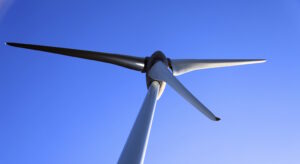Cap on biofuels – next cap on all bioenergy?
Written by Sini Eräjää, EU Bioenergy Policy Officer for BirdLife Europe and the European Environmental Bureau.
The new legislation to limit support for the use of food-based biofuels endorsed by the European Parliament today marks a milestone. It marks the closing of the long debated legal proposal on how to minimize negative environmental and social impacts and increased greenhouse gas emissions from biofuel use. It marks a recognition by the EU that measures intended to fight climate change can result in the opposite if we turn a blind eye to the wider impacts. What it doesn’t mark, is a closing of a bigger debate already in full swing on the role of all bioenergy and its impacts in general.
The deal on indirect land use change (ILUC) and biofuels sealed today puts a cap of 7% on the amount of food based biofuels that can be counted towards the 10% target for renewables in the transport sector. The problem behind these kinds of biofuels is that they use up world’s valuable and limited land resources, with various other uses. Contrary to what was envisioned by many in the early days of biofuels, they did not end up being grown on “marginal” or “unused” land but rather on prime agricultural land.
This has led to numerous problems. It has meant Europe further expanding it’s already unsustainably big ecological footprint over the globe by displacing the production of food and leading to clearing of new land elsewhere. Increased GHG emissions are generated from land use and land use change. Even if the policy focus has been on food crops, these are issues that also apply to the various other “energy crops” such as switchgrass, or willow when grown on agricultural.
The logic is not that different in the case of forests, currently the biggest source of bioenergy in the EU. Increased demand for wood by the energy sector comes on top of other growing demands and is leading to increased harvestings, potential expansion of harvesting to new areas and displacement of some of the current uses of wood. This means diminishing carbon stocks in forests and increased GHG emissions, increased imports from other parts of the world and a range of other potential indirect impacts.
Bioenergy is therefore far from carbon neutral. It is now clear, from a variety of studies that diverting to energy use biomass that would have otherwise been used for food or material is just shifting the carbon around without reducing net emissions. Clearing land for additional harvesting of existing carbon stocks only leads to net emissions.
Sticking to biomass resources that don’t cause more demand for land or forests therefore seems like the only sustainable option. This implies focusing on waste and residues – biomass we are already harvesting but energy of which is currently being wasted and for which no other use is available. This kind of genuinely sustainable bioenergy can be part of EU’s renewable energy mix, but it’s becoming ever more apparent that the amounts of residues from agriculture, forestry and industrial process that are not already used for energy are not enough to meet our projected additional bioenergy demand.
The false assumptions linked to the use of biofuels in earlier EU policies are not just limited to biofuels. They apply to bioenergy altogether. That’s why 10 environmental NGO groups published recommendations on how to deal with bioenergy in the new post 2020 climate and energy framework, taking serious note of the lessons learned from the policies so far. The key asks from these NGOs are:
- Introduce a cap to limit the support for the use of biomass for energy, so that we can stay within the limits of the planet and stick to the amount of sustainable biomass resources we have available;
- Ensure efficient and optimal use of biomass resources, in line with the principle of cascading use, meaning priority to material uses before energy recovery;
- Include correct carbon accounting for biomass to ensure that emissions savings are real and not achieved only on paper;
- Introduce comprehensive and binding sustainability criteria for biomass used for energy;
Neither the EU nor the global climate can afford another failed effort to tackle climate change. That’s why it’s time for the Commission to roll up the sleeves and propose a new policy on all bioenergy that takes on board these recommendations.



